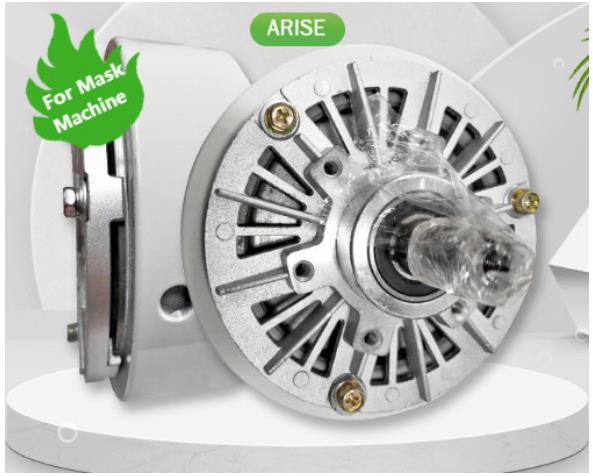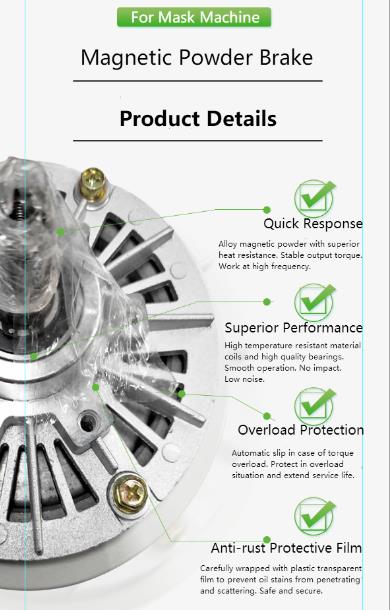3 Useful Ponints to Know Magnetic Powder Brake
A magnetic powder brake is a device that controls the torque between a motor and a load in an exact and variable manner. It is an essential component in many industries that require accurate torque and tension control. Its durability, versatility, and ease of use make it a desirable solution in a variety of industries.
Magnetic Powder Brake is widely used in a variety of industries.

Magnetic powder brakes are useful in these industries because they enable precise and consistent control over torque and tension during the manufacturing process. This is essential for ensuring that the end product satisfies the specifications and is consistently of high quality.
Printing Industry
It is used in printing machines to control the tension of the web or paper during the printing process. This ensures that the printed material is consistently of high quality and devoid of aberrations.
Packaging Industry
It is used to regulate the tension of the packaging material throughout the manufacturing process. This is critical for ensuring that the packaging material is wound correctly and without slippage or wrinkling.
Textile Industry
A magnetic particle brake is used in textile industry to regulate yarn tension during the spinning and weaving operations. This is required to ensure that the yarn is tightly twisted and that the cloth is of uniform quality.
Industrial Equipment
During the manufacturing process, it is utilized to adjust torque and tension in various industrial machinery such as extruders, coaters, and slitters. This is essential for ensuring that the end product is consistently of high quality and meets the required parameters.
How Does a Magnetic Powder Brake Work?
The working of a magnetic powder brake is that the braking force is generated by the interaction of magnetic particles in powder form with the magnetic field created by an electromagnetic coil. A rotor and a stator comprise a magnetic powder brake. The rotor is the output shaft that is connected to the load, whereas the stator is the stationary component that houses the electromagnetic coil. Between the rotor and the stator is a magnetic substance sandwiched. When a current is passed through the electromagnetic coil, it generates a magnetic field that interacts with the magnetic powder, causing the particles to align in the direction of the magnetic field. When the rotor rotates, the magnetic particles are dragged along with it, creating a resistance force in the powder that opposes the rotor's motion. This resistance force is proportional to the strength of the magnetic field produced by the electromagnetic coil, which is directly proportional to the input current. The rotor’s braking force can be varied by adjusting the input current to the electromagnetic coil. This allows for exact adjustment of the torque supplied from the motor to the load.

Factors to Consider For Choosing a Magnetic Powder Brake
Output torque requirements
When choosing a magnetic powder brake, the first aspect to consider is the amount of torque required to stop or retain the load. You must select a brake that can provide the necessary torque to ensure that the load is managed safely and correctly.
Speed requirements
The load speed and rotating speed of the brake must be considered while selecting a magnetic powder brake. You must ensure that the brake is designed to perform at the speeds required by your application.
Environmental factors
The environment in which the brake will be used is an important factor. Temperature, humidity, and dust levels can all have an effect on brake performance and lifespan. You must choose a brake that is intended to work in the environmental circumstances of your application.
Power requirements
Magnetic particle powder brakes require electricity to operate, and the power supply must be compatible with the brake. You must ensure that the power supply voltage, frequency, and current are appropriate for the brake.
Size and weight
If space and weight are constraints in your application, the physical size and weight of the brake are critical considerations. If space and weight are significant considerations, a small and lightweight brake should be selected.
Cost
The price of the magnetic powder brake is also an important issue to consider. To obtain the most bang for your buck, you must weigh the cost of the brake against its performance and features.
- Art
- Causes
- Crafts
- Dance
- Drinks
- Film
- Fitness
- Food
- الألعاب
- Gardening
- Health
- الرئيسية
- Literature
- Music
- Networking
- أخرى
- Party
- Religion
- Shopping
- Sports
- Theater
- Wellness
- IT, Cloud, Software and Technology


